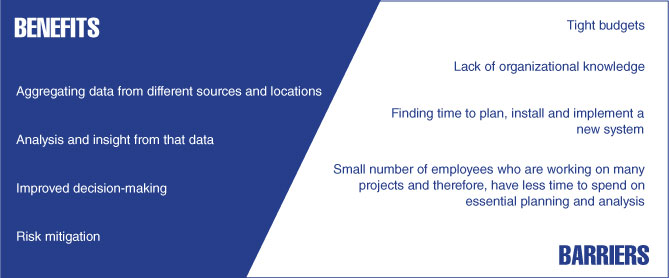As a small business, the hunt for ERP Software can be difficult if you don’t necessarily know what questions to ask. It goes without saying that you’ll want to know pricing, implementation timeline, and out-of-the-box features but what about specific business intelligence tools that can actually help your business grow? Many ERP systems including Blue Link ERP will offer important Business Intelligence functionality that is very useful to business owners.
What are Business Intelligence Tools?
Business Intelligence (BI) refers to any theory or technology that can turn raw information into something meaningful for business owners. The purpose of extracting the raw data and analyzing it is for the purpose of supporting decision-making and improving corporate performance. Some business intelligence tools that you might be familiar with are:
- Excel spreadsheets
- Report writers
- Canned reports
One key part of BI is reporting. Having access to up-to-date reports that cover a broad range of information about your business is extremely valuable. Having these reports pulled automatically is an added bonus that can be accomplished if your ERP system creates them for you. If you are in the market for an ERP system, don’t glaze over the benefits of having some BI capabilities as a part of the software.
In order to overcome the barriers and reap the benefits of Business Intelligence, consider implementing an ERP system with BI functionality to manage all the data in your organization, and automatically provide you with insights and reports. Ultimately, businesses that install BI with robust reporting capabilities find they can compete more effectively in the marketplace, with additional insight into customer’s buying patterns and needs, and with more efficient financial management.
So, now that we know what BI is and why it’s important, let’s discuss four basic stages that a successful BI implementation will go through.
Information
Information refers to the data available to the organization. The smaller the company, the less data available. As software sophistication increases, the amount of information that can be stored also increases. Many companies will manage supplementary key business data in spreadsheets, contact manager databases, payroll systems, and other home-grown databases. These can, potentially, be harnessed together to provide the BI backbone – provided the data is reliable and accurate. However, managing this supplementary data in different programs also leads to disorganization. If your company is looking to have all the information in one place, to avoid double-entry and unnecessary manual processes, consider investing in an ERP system that centralizes data.
Technology
Despite a perception in the IT industry that the cost of technology is no longer a barrier to business intelligence for small or medium-sized businesses, that view is not necessarily shared by end-users. For these companies, the goal is to find a cost-effective solution that is affordable currently but still provides flexibility to be useful as the business grows. That being said, several aggressively priced alternatives have brought comprehensive BI technology within reach. For example, some of the mid-range ERP systems are adding dashboards that are configurable, with drill-downs and, frequently, at little or no additional cost.
Intelligence
The single most important aspect of any BI project is the determination of what needs to be measured, and how to measure it. As a first step, companies should perform an internal audit to determine what needs to be analyzed and reported, and how the findings will add value. Although it might appear that identifying these key success factors, and the consequent metrics, would be easier for a small business owner because the entrepreneur “knows the business inside out”, this is often not the case. Most entrepreneurs are experts in only one aspect of the business, not all of them. The owner with sales acumen may indeed carry all pertinent sales and margin analysis data in his head but would not necessarily be able to factor in cash-flow considerations. Conversely, the engineer who started a successful business will understand what’s critical in the product design and production areas but may not know what the salespeople have to do to succeed.
Implementation & Communication
Once you have assessed what information you have currently, what extra insights you need, and what specific reports and analytics you would like software to pull for you, it is important to prepare an implementation and communication strategy for introducing sophisticated Business Intelligence to your company. If you choose an ERP package with BI functionality, be sure to work with your vendor during your ERP implementation to understand how reports and data can be automatically sent to you.
It is also very important to communicate to employees not just how to use the system, but why it is valuable. Take time to foster employee buy-in by presenting the benefits of automated reporting and BI, and explaining how it will help the company – and most likely make some of their jobs easier!











